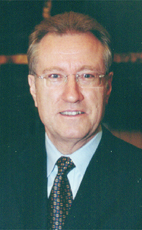Mr. Chairman, it is turning out to be quite successful. The NATO flying training provides a multiphase program starting with operations in Moose Jaw. The final operations at stages three and four of the program are in Cold Lake, Alberta.
The first country to sign up was our own. We provided the base for the operations. We decided to do this as a public-private sector partnership. Various industries are involved in the private side of it. It is unique.
We have not had to buy the aircraft. The aircraft, the Raytheon Harvard II and the British Aerospace Hawk are not on the books of the Government of Canada because they were bought by the private sector consortium. That has been of great benefit to us.
We have been able to get the training program by signing up for it without having to put in the capital funds for the equipment. We have the best and most modern equipment and a new building in Moose Jaw, in fact which I opened, for the headquarters of the operation.
A number of countries have signed up. The first one that signed up was Denmark followed by the U.K. That resulted in more and more interest coming all the time. Once we get that critical mass we can move on from there to sign on other countries much easier as the confidence in the program is shown by the initial signers and as they experience going through the courses. We recently had the first graduates of the course.
We have since had Singapore sign on, which is the first non-NATO country. We have opened it to allies in non-NATO countries as well. They are Singapore, Italy and the latest one is Hungary. The chief of the defence staff went over there and that country signed on.
Not only are we beyond the critical mass needed to make it a success, we are now into the stage of ordering more aircraft, except we do not have to order them and we do not have to pay for them. That will be done by the consortium.
It is a great example of a private-public sector partnership. We help to control the training and ensure that a high quality of training is provided by our own personnel. Some of the other countries also provide the personnel for training. It is air force operated in terms of the training programs but all the support, the equipment and the facilities are provided by the private sector.
It is a great success. It is bringing the pilots of these countries to Canada. We have a similar program also that brings pilots from other countries. That is the one in Goose Bay, Labrador for low level flying. All of that provides a service for our partner countries, our allies. It helps increase interoperability. We are all working together, learning from the same basic training manuals and from people who put the programs on.
The private sector partnership is headed by Bombardier which is doing an excellent job in marketing it. It is a big winner.
When I travel to a lot of countries and meet defence ministers they have a number of people from their forces at the table. Invariably I meet somebody who is a trained pilot in Canada and is a friend of Canada's at the same time. There are those benefits as well in having NATO flying training in Canada.

